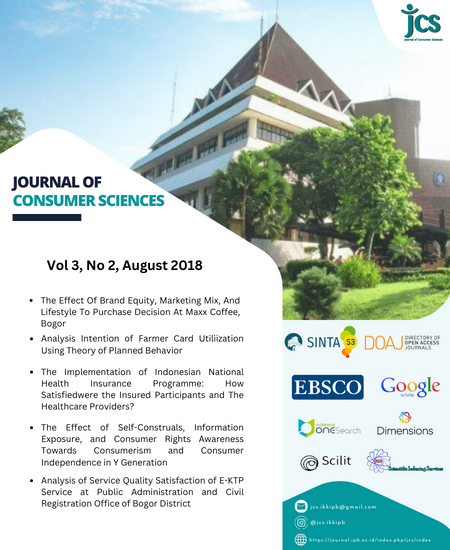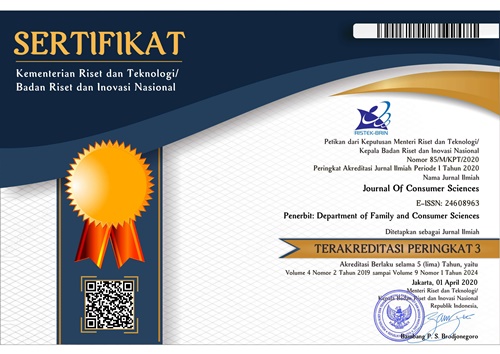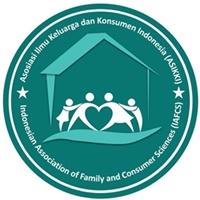The Implementation of Indonesian National Health Insurance Programme: How Satisfiedwere the Insured Participants and The Healthcare Providers?
Abstract
This study examined how satisfied the insured participants and the healthcare providers were with the services provided by the BPJS Health. The study took place in 24 cities/districts in Indonesia. The data was collected through face-to-face interviews with 17,820 insured participants and 1,170 healthcare providers.The survey revealed that the participantswere satisfied with the services they had obtained from the providers. However, the participants at the primary healthcare facilities hada significantly lower satisfaction level than those at the secondary healthcare facilities. Better facilities and medical equipment, better services from medics and paramedics, better drugs availability and quality, along with assurance in obtaining a proper and timeline treatment, all contributed to the higher satisfaction level. Policy makers need to consider making an improvement on the facilities and service qualities at the primary healthcare facilities in order to enhance the participants’ trust. Otherwise, the referral system implementation under the NHI system might not be effectively implemented as participants prefer to get a treatment from secondary healthcare facilities. This study suggests that empathy attributes are the key factor in building satisfaction level. Special attentions need to be given on the “human” aspect of the service providers.
References
Bei LT, Chiao YC (2001). An integrated model for the effects of perceived product, perceived service quality, and perceived price fairness on consumer satisfaction and loyalty. Journal of Consumer Satisfaction, Dissatisfaction, and Complain Behavior, 14:125-140. Brady M, Cronin J (2001). Some new thoughts on conceptualizing perceived service quality: a hierarchical approach. Journal of Marketing, 65: 34-49. Bontis N, Booker L (2007). The mediating effect of organizational reputation on customer loyalty and service recommendation in the banking industry. Managememt Decision, 45(9): 1426-1445. Buttle F (1996). Servqual: review, critique, research agenda. European Journal of Marketing, 30(1): 8-32. Buyukozkan G, Cifci G, and Guleryuz S. (2011). Strategic analysis of healthcare service quality using fuzzy AHP methodology. Expert Systems with Applications, 38 (8): 9407-9424. Dalinjong PA, Laar AS (2012). The national health insurance scheme: perception and experiences of healthcare providers and clients in two districts of Ghana. Health Economic Review, 2(1):1-13.
Edvardsson B (2005). Service quality; beyond cognitive assessment. Managing Service Quality, 15(2): 127-131.
Fuady A (2013). Moving toward universal health coverage of Indonesia: where is the position?. Health Economic, Policy and Law, Erasmus University Rotterdam.
Gronroos C (1984). A service quality model and its marketing implication. European Journal of Marketing, 18(4): 36-44.
Gronholdt L, Martensen A, Kristensen K (2000). The relationship between customer satisfaction and loyalty: cross-industry differences. Total Quality Management, 11(4): 509-514.
Harimurti P, Pambudi E, Pigazzini A, Tandon A (2013). The nuts and bolts of Jamkesmas-Indonesia’s government financed health program. Universal health coverage studies series-the World Bank, Indonesia.
Hu YH, Cheng CC, Chiu SI, Hong FY (2011). A study of customer satisfaction, customer loyalty and quality attributes in Taiwan’s medical service industry. African Journal of Business Management, 5(1):187-195.
Ladhari R (2009). Service quality, emotional satisfaction, and behavioral intentions. Managing Service Quality, 19(3): 308-331.
Lagomarsino G, Garabrant A, Adyas A, Muga R, Otoo N (2012). Moving towards universal health coverage: health insurance reforms in nine developing countries in Africa and Asia. Results for Development Institute, Washington DC, USA.
Lee J (2007). Servqual vs Servperf: round 2 in a multi-cultural setting. Journal of Academy of Bussiness and Economics, VII (3): 77-87.
Liu CH, Yen LC (2010). The effects of service quality, tourism impact, and tourist satisfaction on tourist choice of leisure farming types. African Journal of Bussiness Management, 4(8): 1529-1545.
McAdam R, McLean J, Henderson J (2003). The strategic “pull” and operational “push” of total quality management in UK regional electricity service companies. International Journal of Quality and Reliability Management, 20(4).
Prayag G (2007). Assessing international tourists’ perceptions of service quality at Air Mauritius. International Journal of Quality and Reliability Management, 24(5).
Rokx C, Schieber G, Harimurti P, Tandon A, Somanathan A (2013). Health financing in Indonesia: a reform readmap. The World Bank, Indonesia.
Santouridis I, Trivellas P, Reklitis P (2009). Internet service quality and customer satisfaction: examining internet banking in Greece. Total Quality Management, 20(2): 223-239.
Seth N, Deshmukh SG, Vrat P (2005). Service quality models: a review. International Journal of Quality and Reliability Management, 22(9).
Simmonds A, Hort K (2013). Institutional anaysis of Indonesia’s proposed roadmap to universal health coverage. Health Policy and Health Finance Knowledge Hub, The Nossal Institute for Global Health, The University of Melbourne.
Stodnick M, Rogers P (2008). Using servqual to measure the quality of the classroom experience. Decision Sciences Journal of Innovative Education, 6(1): 115-133.
Tang LL, Cheng PJ (2010). The quality survey on medical service by using Kano two-dimensional model. Journal of Chinese Institute of Industrial Engineering, 18(2): 71-81. Thabrany H (2009). Politics of national health insurance of Indonesia: a new era of universal coverage. Center for Health Economics and Policy Studies, University of Indonesia. Yaghi DS (2010). A customized scale for measuring service quality in a college shop: a context specific approach. Doctoral Thesis. Northumbria University, UK. Zeithaml V (1988). Consumer perceptions of price, quality, and value: a means-end model and synthesis of evidence. Journal of Marketing, 52: 2-22.
Authors who publish with this journal agree to the following terms:
- Authors retain copyright and grant the journal right of first publication with the work simultaneously licensed under a

This work is licensed under a Creative Commons Attribution 4.0 International License. that allows others to share the work with an acknowledgement of the work's authorship and initial publication in this journal. - Authors are able to enter into separate, additional contractual arrangements for the non-exclusive distribution of the journal's published version of the work (e.g., post it to an institutional repository or publish it in a book), with an acknowledgement of its initial publication in this journal.
- Authors are permitted and encouraged to post their work online (e.g., in institutional repositories or on their website) prior to and during the submission process, as it can lead to productive exchanges, as well as earlier and greater citation of published work (See The Effect of Open Access).











